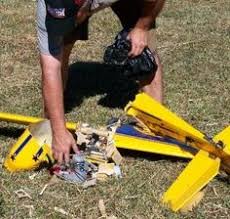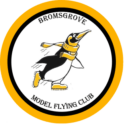Lessons Learnt

This list is intended to pass on our experiences (both good and bad) to each Member (or visitor!). Hopefully we will all benefit from sharing them!
- Have you got one of those new fangled digital radios with different model settings? You have? Well you do double check that you are using the correct model set up for the plane you are about to fly, don’t you?
- Try and avoid putting an engine kill on a switch. If you operate the wrong switch when trying to adjust flaps, retracts etc you may inadvertently kill your engine. Some Spektrum radios have small trims or buttons that can be used and wouldnt be confused with other functions. Its ok to use a switch on an electric model as you can just switch it back on!
- How many times have you had a ‘nasty’, just repaired the damage and flown again? Well, you need to check those servos for internal damage, specifically to the gear train. In a crash, the servos can take a hefty whack and sometimes teeth get stripped from the gears – most servos use plastic gear trains. If this happens, the servo horn will not traverse properly – not good if it’s the aileron or elevator servo!! So double check those servos after a crash!!
- Does your model corkscrew out of that loop when full up elevator is pulled? Does it have separate elevator halves connected to two separate clevises? Well make sure that BOTH clevises are connected to the SAME hole on each elevator horn! Different elevator movement on each side of the tailplane can do strange things in a loop . . . . !
- Have you been messing about with the servo reverse functions on your transmitter on another model in the work shop? Do that last check before you fly! When you are about to take off, do a check that ALL your controls work, and more importantly, that they work IN THE CORRECT SENSE. In fact, do that last check before you fly anyway!
- Make sure the crystal and servo leads are securely and firmly connected to the Rx – if possible hold the crystal in with a dab of electrical tape. Losing connection between the crystal or servos and the receiver can result in an impromptu and complete re-kitting of your pride and joy!
- Some pilots route the Rx antenna out the top of the fuselage and connect it to the top of the tail. This is fine and should ensure that the Tx signal reaches the aircraft loud and clear!! It is a good idea to use an elastic band to make the connection between the antenna and the tail. The elastic will provide a gentle tension to keep the antenna taut and, in the event of an “arrival” that snaps the tail group off (oh yes, it does happen!) the elastic will break rather than the antenna.
- Aluminum spinners! There is a greater chance of prop slip even though the back plate is knurled it gets worn down particularly when using an electric starter. I actually did a full flight with the engine note raising and lowering on its own (the prop was slipping), I thought it was the plug and changed it, then next flight and she was barely off the patch when the spinner, nut, prop, prop driver and all went walkies. Moral to this story – if you have an aluminium spinner, check all is tight after every couple of flights!
- Plastic spinners! The ones supplied by most ARTF kits where the back plate fits BETWEEN the propeller and the prop driver are crap – the propeller always ends up slipping ! Replace the spinner with a type whereby the prop butts up against the prop driver on the engine.
- This is an old one but it is still valid for all flyers, experienced or not! So your model is flying towards you, and you suddenly have a mental block as to which way to move the stick to level the plane. Remember the mantra – THUMB TO THE LOW WING !! Moving the tx stick towards the wing that is low works every time. Go on – Try it !
- As aeromodellers it’s clear we’ve already lost our minds (!) but losing orientation or your airplane when flying is unnerving at the least and expensive at the worst. It is especially bad in overcast conditions when your plane is more likely to be in silhouette against the clouds. The best you can do is to make sure the colour scheme topside of the plane is different from bottom, some people put a bright colour on one of the wingtips, don’t let the plane go too far away from you especially in overcast conditions. If you do lose orientation then throttle back and use gentle inputs and see how the plane responds – with practise you should be able to regain orientation and continue the flight. If you have rolled inverted beware that you might need to push in DOWN elevator to gain altitude; once safe you can roll upright and continue your flight, or maybe land to calm your nerves!
- SPINNING – The most useless thing is the air ABOVE you, so give yourself PLENTY of height for recovery.
